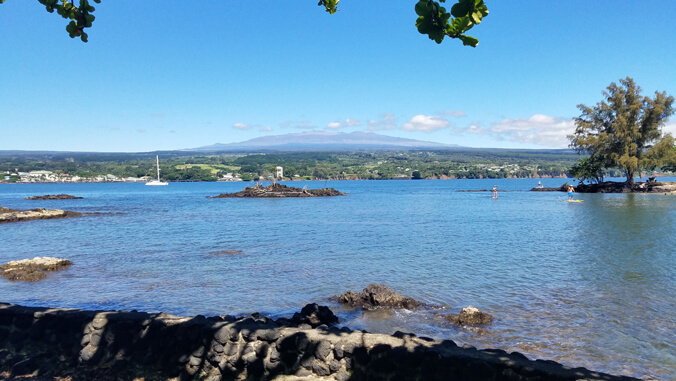
A new study highlights the growing threat of microbial pollution in Hilo Bay on Hawaiʻi Island. Partially funded by the Pacific Islands Climate Adaptation Science Center (PI-CASC), a program hosted by a university consortium, led by the University of Hawaiʻi at Mānoa, the research found that levels of harmful bacteria, such as Staphylococcus aureus (staph) and methicillin-resistant S. aureus (MRSA), spike at beaches with freshwater discharge.

Published in Water Environmental Research, the study also warns that climate change will worsen these conditions. Predicted changes in precipitation could cause larger, more concentrated pulses of pathogen export during storms. This would increase the public’s risk of infection from swimming and other recreational activities.
Led by UH Mānoa researcher Maria Steadmon and co-authored by Tracy Wiegner, a marine science professor at UH Hilo, the study currently finds that pathogens such as Staphylococcus aureus and MRSA are 6 to 78 times more concentrated in certain areas of Hilo Bay.
“Sea level rise will result in more onsite sewage disposal systems being inundated with seawater, resulting in a large export of pathogens from them with the tides,” Weigner said.
Setting the stage for critical research
This research builds on work started by UH Hilo alumna Louise Economy during her time in the PI-CASC Manager Climate Corps (MCC) program. MCC connects graduate students with UH Hilo faculty and established networks within Hawaiʻi Island’s natural resource management communities. This collaboration aims to build long-term partnerships that enhance community resilience and adaptation to climate change impacts.
“Working with managers, or people using science to support community resilience to climate change, and to create research projects with usable outcomes was compelling to me because it allows our efforts to be of direct use,” said Economy.
MCC foundational vision realized

Economy’s work, which began in 2016, linked rainfall to increased pathogen levels, predicting that climate change would intensify these trends. Her research led to predictive models that inform watershed management decisions, especially under changing climate conditions.
“By PI-CASC providing support for Louise in the Manager Climate Corps, a seed was planted and through Louise’s work and mentoring, it blossomed into several other student studies and publications, including the most recent one by Maria Steadmon. All studies are groundbreaking and PI-CASC funding was instrumental to starting it,” said Wiegner.
Today, Economy is a microbiologist at the Hawaiʻi District Health Laboratory. Her team conducts analyses of ocean water, drinking water, milk, and shellfish products and identifies human pathogens.
More on PI-CASC
The vision of PI-CASC is to provide science that supports the adaptation of fish, wildlife, water, land, and people to a changing climate. The program is hosted by a collaboration of universities, including UH Hilo and the University of Guam, in partnership with the U.S. Geological Survey.

